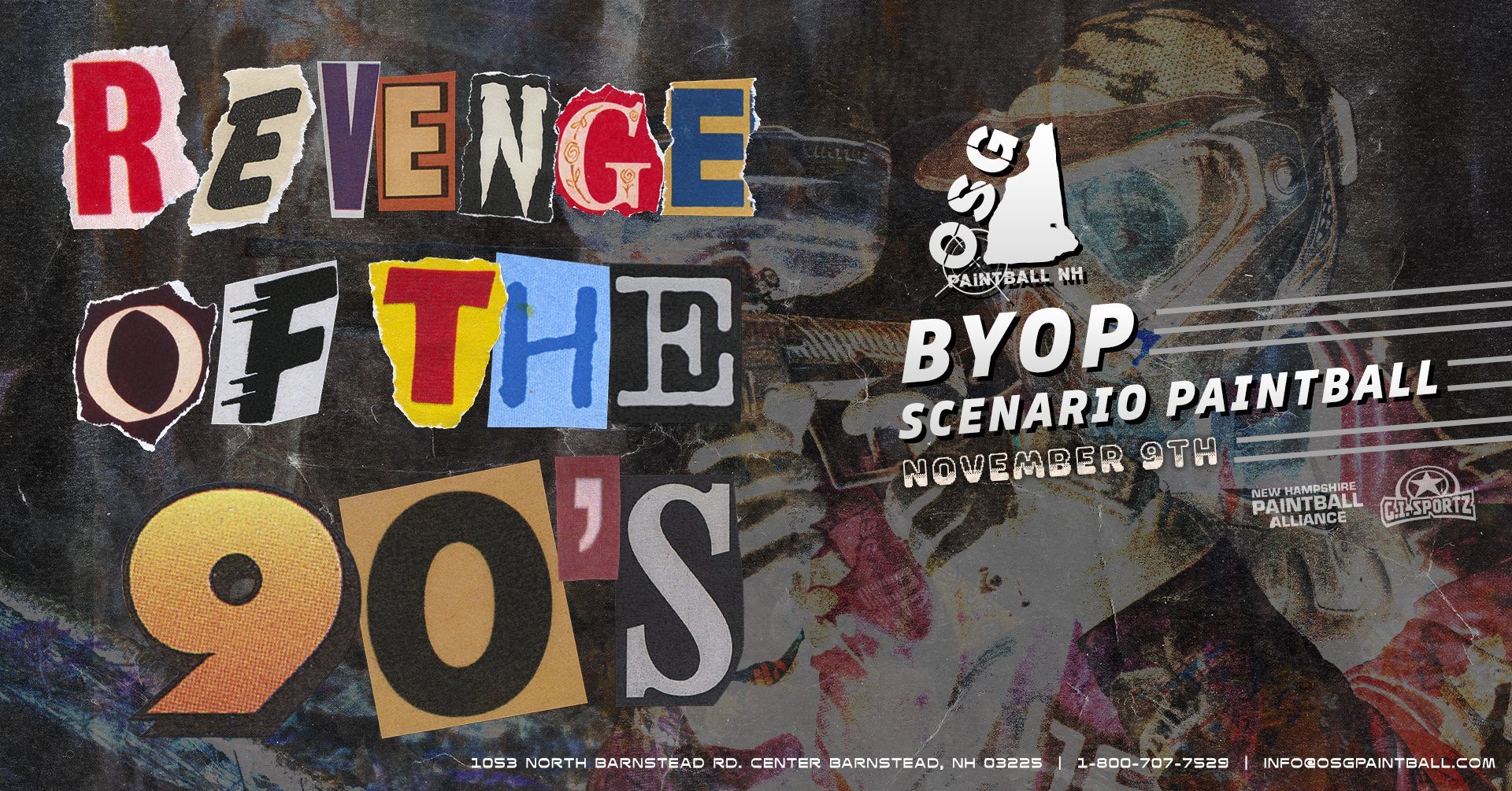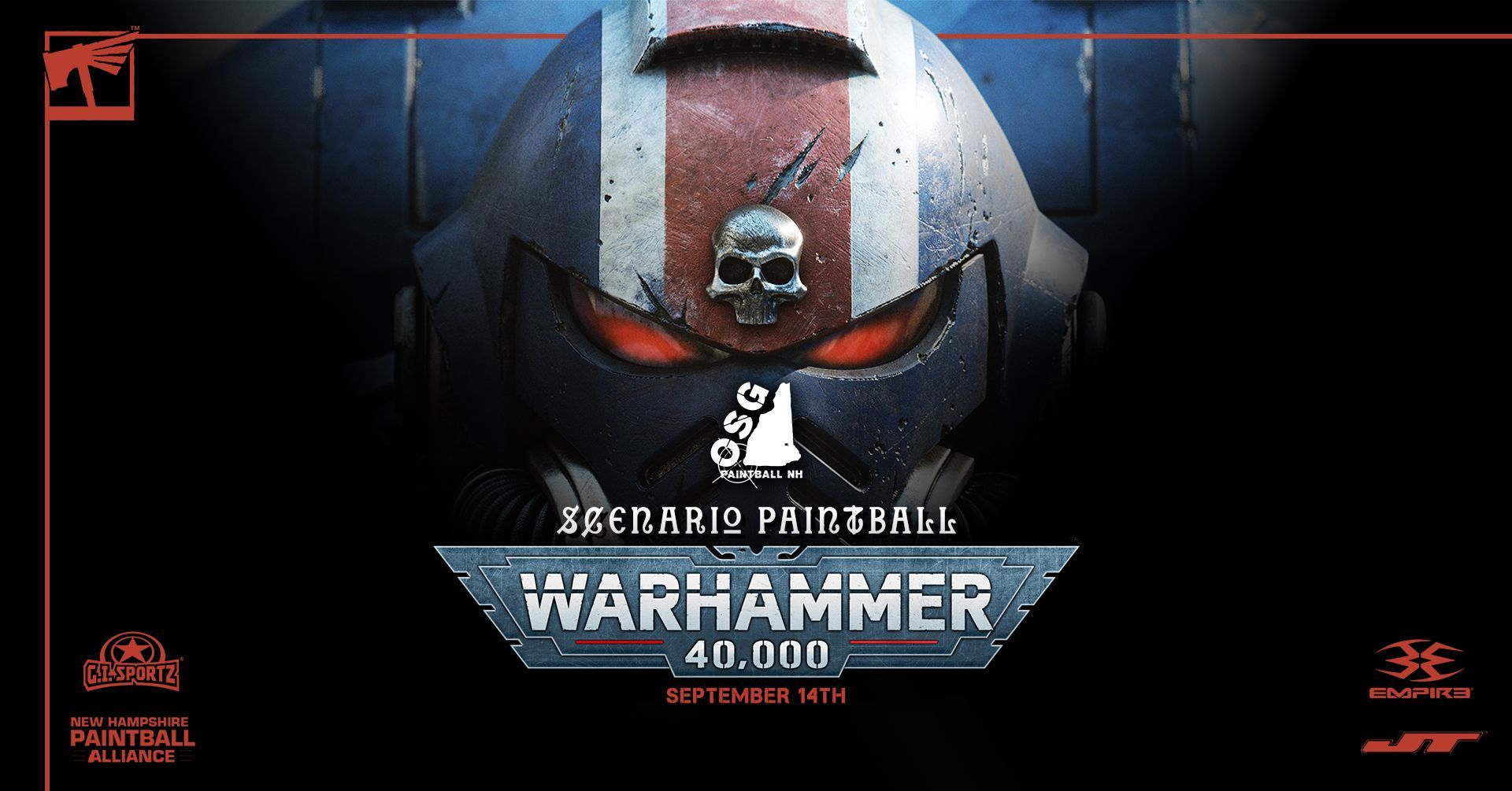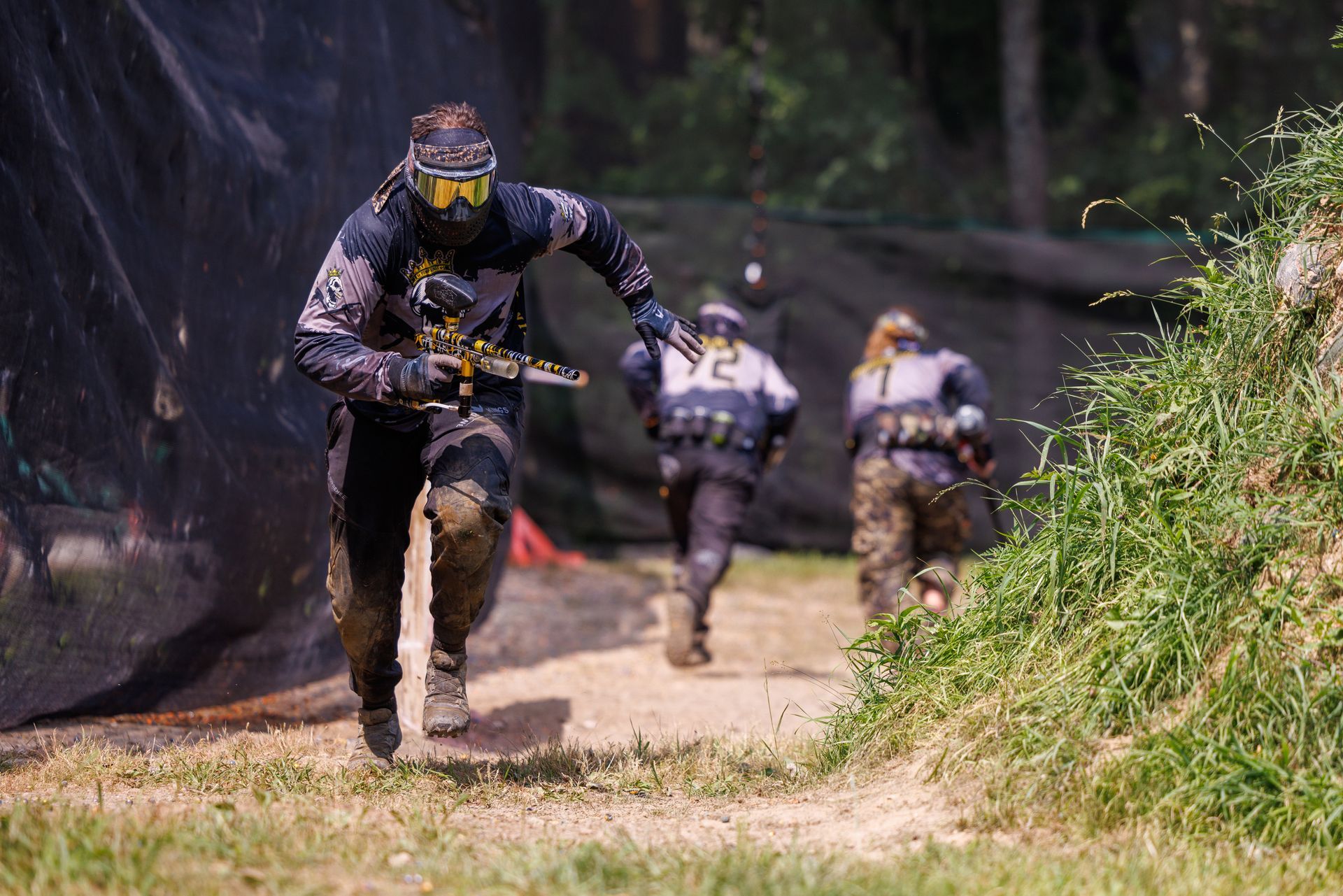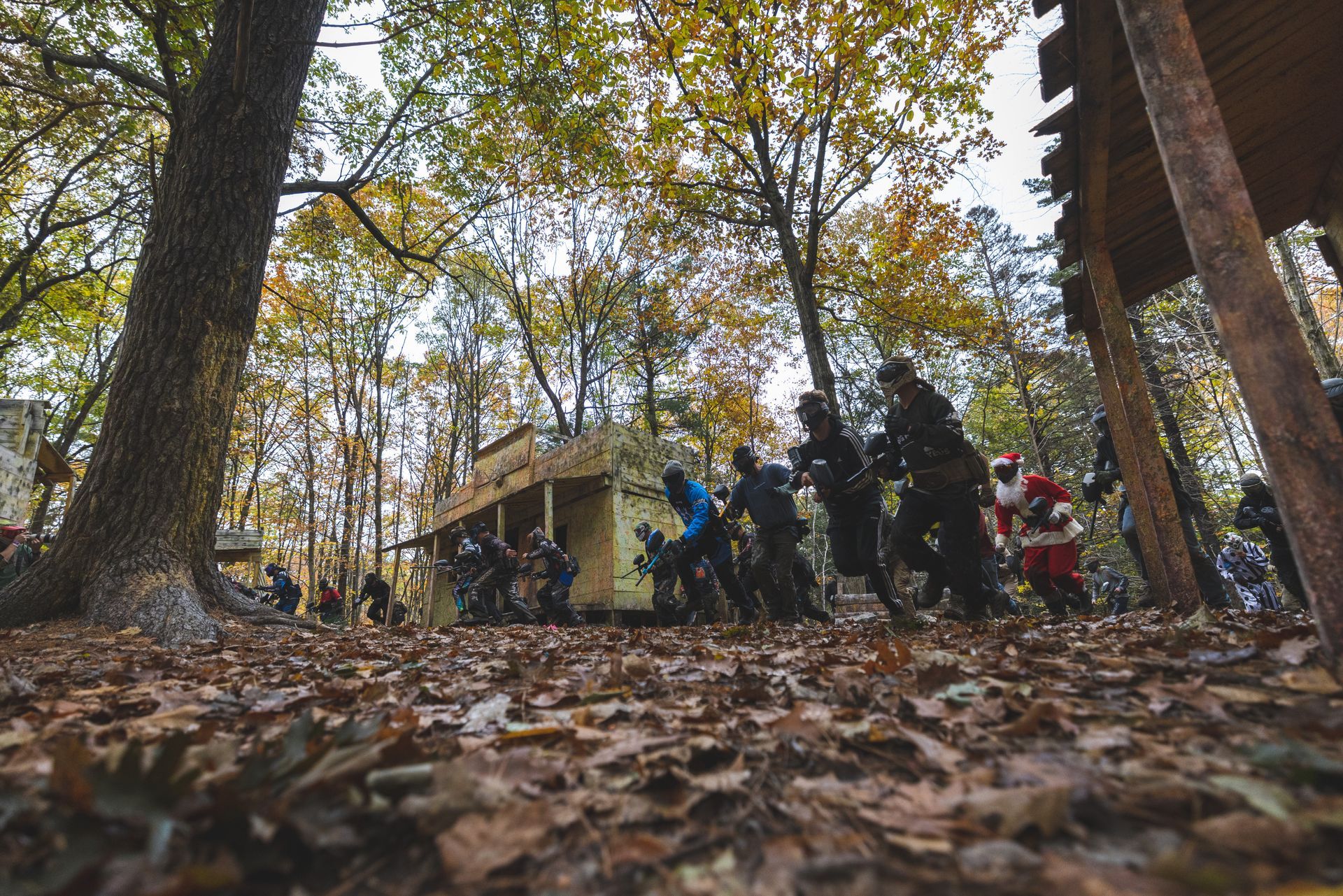Field Building 101: The OSG Way
April 9, 2020
As a paintball field we pride our self on 3 major things: community, experience, and field quality. Today we will go into some of the history, process, and decision making that goes into why we build fields the way we do.
History
In the beginning, OSG Paintball started with two giant fields. Halo Village and Sherwood Forest (Big Woods) were one field simply called “The Village”. The other field was our Castle field which was home to a three story, 360* structure. The next field we built was on the area you all now know as Western Town. It was a stacked log “speedball” field. From there, we went through many iterations of speedball fields where Urban Town and the overflow parking lot is. Then we added Western Town, Urban Town, Hamburger Hill, Fire Base Kilo (now Area 51 & First Contact), Small Woods, Pirate Cove, The LZ, and Star Wars (not in that order). From two fields to twelve. The rest is history.
Building a Paintball Field is Part Art, Part Science.
The Art of Field Building
Themed fields are our specialty. Multi level, multi stage, immersive environments are what we strive to create. We aim to recreate the forts we built as kids, the video games we play in our youth, and the movies we watch as adults. Paintball fields should be challenging yet forgiving, adrenaline pumping yet provide a level of safety, and stressful yet rewarding. Our fields are built with love and tested by our employees to make sure the finished project is everything described above.
The Science of Field Building
Our fields are not simply made to look good in pictures and video, they are planned out from start point to start point. We use the lay of the land to create shooting, running, and lanes of movement. “The first thing I do when I am going to build a field is walk the terrain…then establish start points based on the theme. I start with the main building placement first and then build out from the center” says Kevin Oakes, the man responsible for building our fields over the last 20 years. “I also determine the size and height of a bunker based on the terrain and shooting lanes from other bunkers in the immediate area. Another vital aspect of field design is analyzing movement from bunker to bunker. Placement of bunkers should be a reasonable distance forward and side to side.”
As marker technology and ROF have advanced, so have our fields. Those long runs of the past are now almost impossible to make. Over the years we have built structures and bunkers closer together to accommodate the changes in marker tech and playing style.
Field Testing
Once a field is built, it’s about testing it to make sure it plays as well as it looks. Our employees will play games on repeat trying different game types and starting points. We search for field flow, dangerous “lanes”, potential weak points that can be exploited, and bunkers/locations that are too “powerful”. From there we adjust to make sure the field plays the way we want it.
Once the employee testing phase is complete, we let our season pass holders get first dibs at playing it. Listening to their feedback is vital because sometimes no amount of employee testing can predict how these fields are played by the masses. Once this phase complete, it’s time to open to the public!
Layout Changes
The last piece of testing comes in a form we don’t discuss much. We will use some of our better players and staff to try and find and exploit gaps in field design. What are we talking about? It’s best described with an example:
Eight or so years ago one of our employees found a way to run Western Town in under two minutes (normally just north of 1 minute) with two players from the hotel side. This exploited a big gap in the Western Town design that no one would have ever noticed during the initial testing process. A few of our season pass holders ended up picking up and replicating this move which turned Western Town into a one sided affair. There was no way to counter it without changes to the field so we added a large bunker on the church/woods back corner aptly named “stick bunker” and a couple extra buildings on lookers right of the church. This is one example of how our fields are always evolving and changing based on player habits.
Scenario Games
Our fields are not just designed to run as individual fields. We also run multi-field big games during BYOP and full field scenario games. When we build new fields, we design them to play well when the boundaries are dropped between fields. On top of this, we analyze scenario game player movements and areas that tend to cause stalemates. We will add bunkers and structures to try and encourage movement and make it easier for players to progress around the field.
Field Maintenance
The final piece of the puzzle is field maintenance. We have a field maintenance crew that maintains our fields every week to keep everything clean and safe. We use the hashtag #alwaysbuilding because that’s what we do. We are always building. Always improving. Always progressing. Any given weekend you will find new bunkers, more brush clearing, groomed walk ways, and so much more. This is essential at any paintball park, and something we do on a weekly basis. In fact, we have logged our field updates and maintenance every year since 2014. Want to check out the 2020 Field Maintenance Log and read the previous years’ updates? Click the button below!
The post Field Building 101: The OSG Way
appeared first on OSG Paintball.
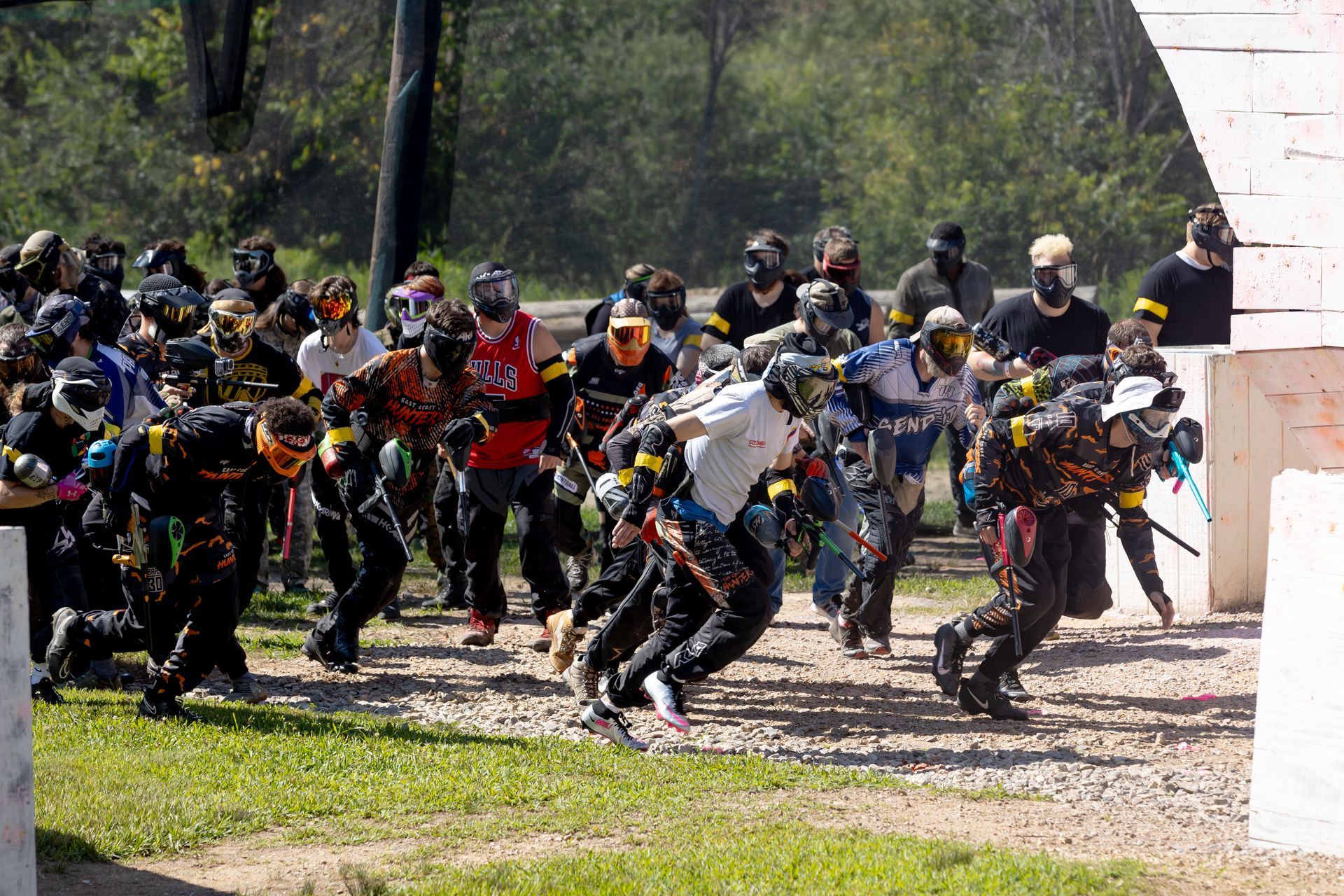
By Tom Ryan
•
July 17, 2025
Operation Overlord 2025 weekend kicks off tomorrow! Expect hours of non-stop paintball, great food and beverages in The Bunker, camping, tons of giveaways, and much much more. Weekend Schedule Friday Walk On Play from 4:00-8:00pm & it's Ladies' Night! Admission is only $5 if you are pregistered for Sunday's game The Bunker will be serving food from 4:00-8:15 PM. The bar will be open and stay open as long as needed. Camping is available Friday night for free. Saturday Walk On Play from 9:30-5:00 Admission is only $5 if you are pregistered for Sunday's game The Bunker will be open from 11:00-7:00 PM-ish. If people are still there eating we'll keep cooking. The bar will be open as long as needed. Camping is available Saturday Night for free. There will be a screening on a large projector screen of Saving Private Ryan Saturday night. Location TBD. Sunday Gates open at 7:00 am Check in starts at 7:30 am Safety briefing begins at 9:00 am for the uninitiated Field briefing begins at 9:15 am Generals meetings start immediately after Game goes out at 10:00 am whether you are on field or not Game break will be from 12:30-1:30 Taco Bar 12:00-1:30. The full menu and bar will be available starting at 2:00 pm Game ends at 4:00pm Final score and awards will begin at 4:15 at The Bunker Game Map, Generals, and Camping Commanding the Allied Forces will be Christopher Doughty! He was Commander of the Rebel Alliance at our previous Star Wars scenario, and is back for more. Always active and themed for the role, you will not be able to miss him on the field. Commanding the German Forces will be Ben Mellish and the Metrowest Bulldogs! Ben is a seasoned vet at commanding teams. He has been a commander on the german side at ION, and is leading the charge at OSG for the third year in a row. He's won multiple game at OSG, and his squad has won multiple MVT awards. You can view and download the game maps below.

December 18, 2024
The final weekend of the 2024 season has come and gone. Normally, we shut the field down and go into hibernation until March. This year, things will be a bit different. We are taking a few weeks off to spend the holidays with family and friends, and will reopen on January 4th, 2025.

November 7, 2024
The final scenario of the year is this weekend, and it's BYOP! For one day only, we are bringing the 80's back. Collect Mario coins and VHS tapes, go Back to the Future, experience a Nightmare on Elm Street, or spend a Weekend at Bernies. Nostalgia is the name of the game, and we are here to deliver the good times.




